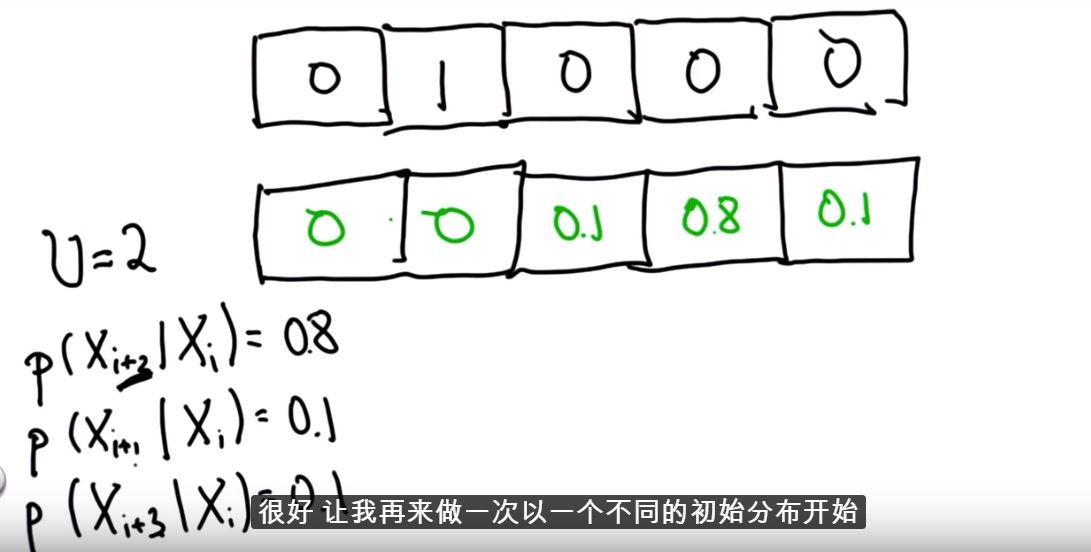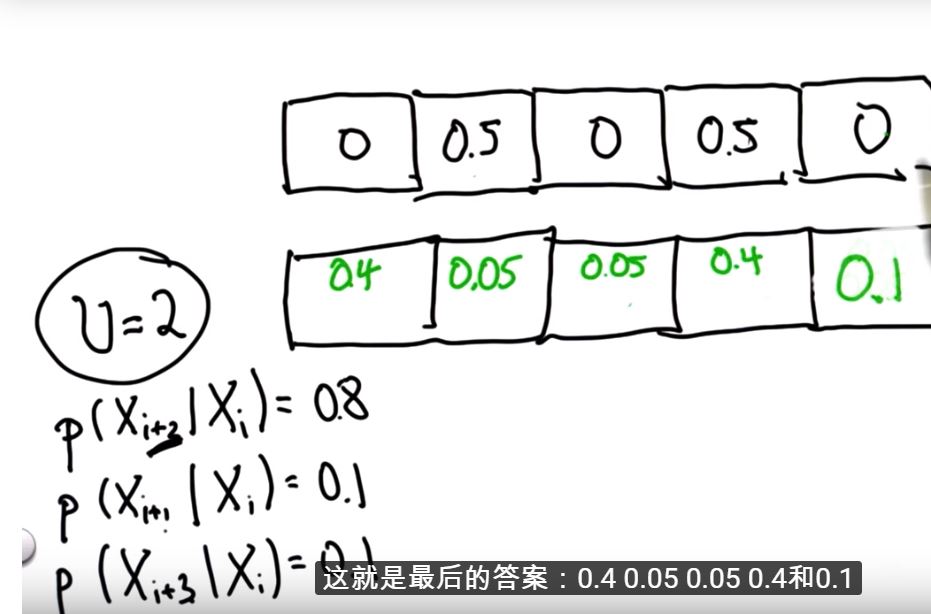一个函数,有两个输入分别为一个链表和一个整数,完成这个函数使得链表中的数值按照给定整数向左或向右移动,如整数为正,则向右移动,若为负则向左移动。
#Program a function that returns a new distribution
#q, shifted to the right by U units. If U=0, q should
#be the same as p.
import copy
p = [0, 1, 0, 0, 0]
world = ['green', 'red', 'red', 'green', 'green']
measurements = ['red', 'green']
pHit = 0.6
pMiss = 0.2
def sense(p, Z):
q = []
for i in range(len(p)):
hit = (Z == world[i])
q.append(p[i] * (hit * pHit + (1 - hit) * pMiss))
s = sum(q)
for i in range(len(q)):
q[i] = q[i] / s
return q
def move(p, U):
#
# ADD CODE HERE
#
#print (p)
q=copy.copy(p)
for i in range(len(p)):
a.append(p[(i-U)%len(p)])
return q
print move(p, 1)
输出:
[0,0,1,0,0]
精确移动

非精确移动


非精确移动的代码实现:
#Modify the move function to accommodate the added
#probabilities of overshooting or undershooting
#the intended destination.
p=[0, 1, 0, 0, 0]
world=['green', 'red', 'red', 'green', 'green']
measurements = ['red', 'green']
pHit = 0.6
pMiss = 0.2
pExact = 0.8
pOvershoot = 0.1
pUndershoot = 0.1
def sense(p, Z):
q=[]
for i in range(len(p)):
hit = (Z == world[i])
q.append(p[i] * (hit * pHit + (1-hit) * pMiss))
s = sum(q)
for i in range(len(q)):
q[i] = q[i] / s
return q
def move(p, U): q=[] for i in range(len(p)):
s=pExact*p[(i-U)%len(p)]
s=s+pOvershoot*p[(i-U-1)%len(p)]
s=s+pUndershoot*p[(i-U+1)%len(p)]
q.append(s)
return q
print move(p, 1)